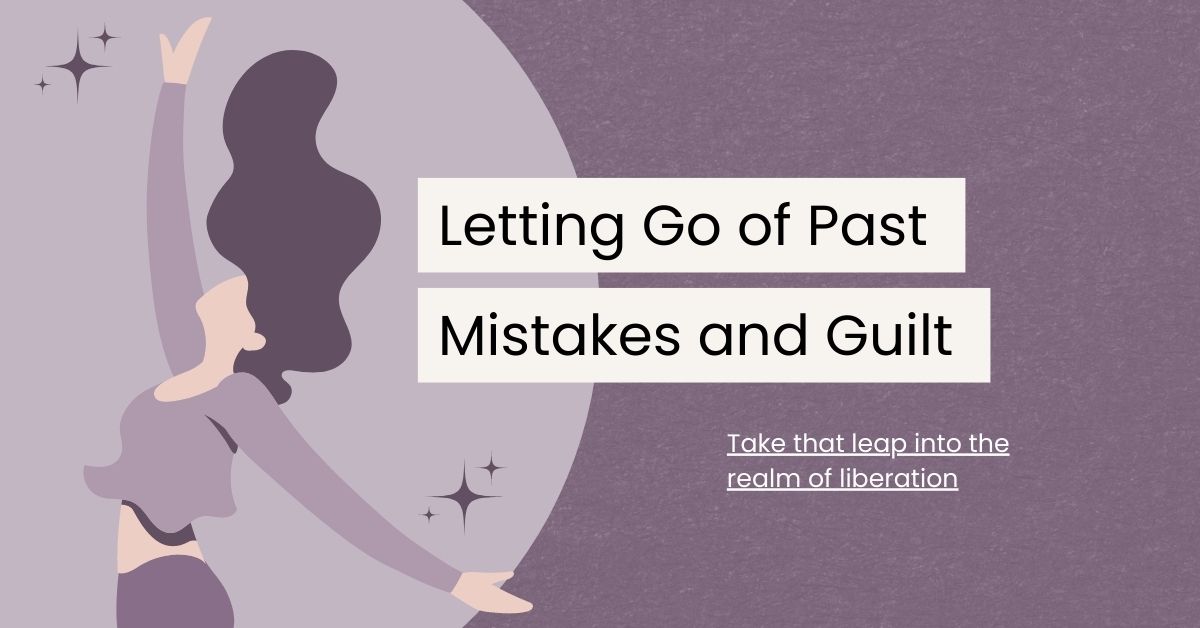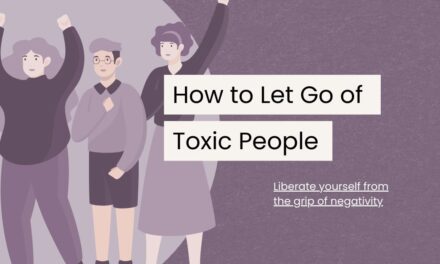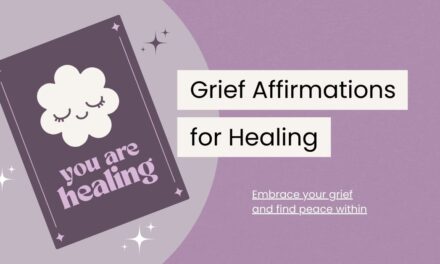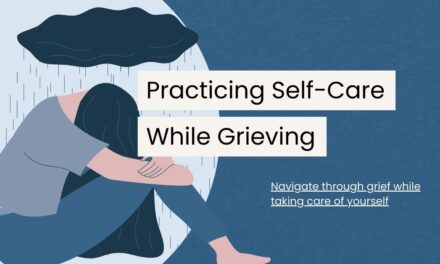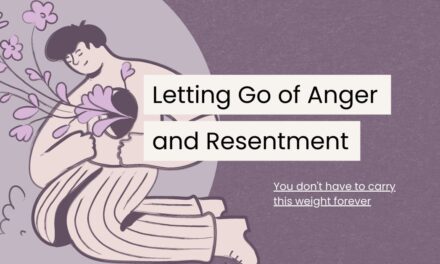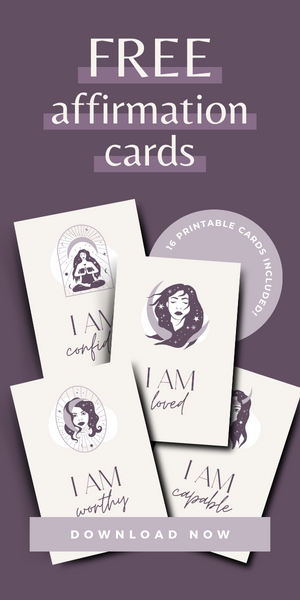Last Updated on August 8, 2023
Have you ever felt like there’s a weight on your shoulders, a burden from past mistakes and guilt that you just can’t seem to shake off?
It’s a heavy load to carry, isn’t it?
But here’s the thing: you don’t have to carry it forever.
In this guide, I’m going to walk you through the art of letting go of past mistakes and guilt, step by step.
So, let’s dive in and free you from the chains of the past.
But first things first…
Why Is It So Hard To Let Go?
We’ve all been there, caught in the loop of rewinding cringe-worthy moments or replaying decisions that make us wince.
But why do we do this? Why is it so hard to loosen the grip on what’s done?
Let’s break it down in a way that resonates:
1. Fear of Repeating Mistakes
Holding onto past mistakes can feel like an insurance policy against future blunders.
It’s as if our brain’s trying to save us from repeating history’s missteps.
But here’s the truth: clinging to yesterday’s errors actually stifles your ability to seize new opportunities.
2. The Redemption Quest
Guilt can sometimes masquerade as a way to seek redemption or make amends.
We think if we punish ourselves hard enough, we’ll somehow earn a clean slate.
The irony is, this self-imposed penance becomes a merry-go-round, preventing us from making actual progress and embracing change.
3. Societal “Shoulds”
We’ve all heard the chorus: “You messed up, so now you must suffer.”
Society often touts the idea that guilt equals responsibility.
But, let’s get real – clutching onto guilt like it’s a lifebuoy doesn’t help anyone.
In fact, it stifles growth and chokes off our capacity to learn.
The truth is, keeping tabs on past mistakes and guilt is a testament to our humanness.
It’s our way of saying, “Hey, I acknowledge that happened.”
But it’s high time we shift gears – from self-inflicted penance to a journey of growth.
Now, let’s roll up our sleeves and dive into the steps to letting go of past mistakes and guilt that will help you embrace the possibilities of tomorrow.
The Healing Process: Letting Go of Past Mistakes and Guilt
Step 1: Self-Reflection and Acceptance
This step is your invitation to pause, take a deep breath, and turn the spotlight inward. It’s about embracing the past not with judgment, but with understanding.
Think of it as flipping through the pages of a story – your story.
Remember, your past actions aren’t the sum of your identity; they’re chapters that contribute to your growth.
So, let’s dive into some tips to navigate this crucial first step:
- Create a Safe Space: Find a quiet corner where you won’t be disturbed. Grab a journal or simply sit in contemplation.
- No Judgment Zone: As memories surface, resist the urge to criticize yourself. This is about understanding, not self-condemnation.
- Ask the Right Questions: Instead of dwelling on “What was I thinking?”, focus on “What have I learned?”.
- Embrace the Lesson: Recognize that your mistakes are rich with lessons. Each misstep has contributed to the person you are today.
Self-reflection isn’t a blame game; it’s a bridge to self-compassion.
It’s your way of acknowledging where you’ve been, while keeping your gaze fixed on where you’re headed.
As you venture forward, remember that this is a journey of growth and self-improvement.
You’re not defined by your past, but by your willingness to learn from it.
Step 2: Taking Responsibility and Making Amends
So, you’ve looked back and unraveled some threads of the past. Now, it’s time to pick up the spool and weave a new narrative.
This second step is all about owning your story.
Owning up isn’t always easy; it can feel like walking through a rainstorm without an umbrella.
But, my friend, it’s a rain that cleanses, not drenches.
Taking responsibility is your key to stepping out of the cycle of guilt and moving towards a path of healing.
Here’s how to navigate this challenging but liberating step:
- Face the Music: Approach this with courage. Acknowledge your actions without deflecting blame onto others.
- Authentic Apology: If your actions hurt someone, reach out and apologize genuinely. It’s not about absolution; it’s about showing respect for their feelings.
- Actions, Not Words: Sometimes, actions speak louder than words. Consider how you can make amends through your deeds.
Taking responsibility is like stretching your wings after being caged.
It’s a declaration of growth, a sign that you’re willing to break free from the past’s grip.
By acknowledging your actions and making amends, you’re carving a path towards forgiveness – both from others and, importantly, from yourself.
Step 3: Learning and Growth
When you think of success, who comes to mind?
Chances are, they’ve stumbled and fallen just like you.
But here’s the secret: they didn’t stay down.
They turned their mistakes into stepping stones, and so can you.
Let’s unveil how:
- Admire Imperfection: Reflect on successful individuals you admire. Research their journeys, and you’ll find a trail of missteps they turned into milestones.
- Reframe Failure: Shift your mindset – replace “failure” with “feedback”. Each slip offers insight into areas that need growth.
- Set Micro-Goals: Break your growth into bite-sized steps. Achieving these will boost your confidence and reinforce the value of learning from mistakes.
Think of growth as a puzzle; each mistake is a piece that contributes to the bigger picture.
As you embrace the mindset of a lifelong learner, you’ll see that the path forward isn’t just a series of stumbles – it’s a dance of progress.
Step 4: Forgiving Yourself
Imagine being your own best friend – someone who listens without judgment, forgives without hesitation, and loves unconditionally.
Now, it’s time to turn that imagination into reality.
Remember, forgiveness isn’t just an act; it’s a gift you deserve.
By forgiving yourself, you’re unwrapping that gift and offering yourself a chance to begin anew.
Here’s how to unwrap that gift:
- Mirror Talk: Stand in front of a mirror and speak to yourself as you would to a friend. Allow kindness to flow through your words.
- Release the Gavel: Imagine a courtroom where you’re both the judge and the accused. Declare yourself “not guilty” and allow forgiveness to wash over you.
- Visualize Letting Go: Picture your guilt as an anchor. Envision yourself untying the ropes and watch the anchor float away, leaving you unburdened.
Self-forgiveness isn’t an eraser for the past; it’s a paintbrush for your future.
With each stroke of compassion, you’re reshaping your canvas, turning imperfections into art.
Step 5: Mindfulness and Present-Centered Living
We’ve journeyed through reflection, responsibility, growth, and forgiveness. Now, it’s time to anchor yourself firmly in the present:
Ever caught yourself lost in the maze of “what ifs” and “should haves”?
Mindfulness is your compass out of that maze, guiding you back to the here and now.
Let’s see how to integrate mindfulness into your daily life:
- Breath Awareness: When guilt or regret sneaks in, focus on your breath. Inhale deeply, exhale fully. The act of breathing grounds you in the here and now.
- Sensory Dive: Engage your senses – touch something, listen to the sounds around you, savor the taste of your food. This sensory immersion pulls you back from rumination.
- Gratitude Ritual: Cultivate gratitude by listing three things you’re thankful for each day. Gratitude amplifies the beauty of the present moment.
You can check out this post for more ways to practice mindfulness daily.
Remember, mindfulness isn’t about banishing thoughts of the past; it’s about choosing to live fully in the present.
It’s the art of being an active participant in your life, rather than a spectator of regrets.
How to Embrace a Guilt-Free Future
Congratulations, brave soul!
You’ve tackled the steps, confronted your past, and started building a better relationship with yourself.
But what comes next?
It’s time to shift your focus from the past to the future, and here are a few more ways to do it:
Journaling: Write to Your Future Self
Think about yourself a year from now. Can you picture the person who’s moved past the weight of guilt?
Grab your journal and jot down a letter to your future self.
Pour out your thoughts, your dreams, your ambitions.
Congratulate yourself on breaking free from the grip of the past. Describe the good stuff you’ve embraced, the fears you’ve tackled, and the goals you’ve chased.
This letter will remind you how far you’ve come and how much you’re capable of.
Affirmative Declarations: Speak Your Truth
Words are powerful.
Create short, punchy statements that pump you up and push you forward.
Say these declarations out loud, every day:
- “I’m letting go and moving on.”
- “I’m growing through my mistakes.”
- “Every day is a fresh start.”
- “I’m choosing self-kindness over self-blame.”
Shout them out in front of your mirror. Let them flip your script from doubt to determination.
You can check out our extensive list of affirmations for letting go here.
Community Connection: Share Your Intentions
Don’t do it alone.
Share your plan to let go of the past and embrace a guilt-free future with a friend or family member.
Having someone to talk to can be super helpful. They’ll remind you of your progress and keep you on track.
Final Thoughts on Letting Go of Past Mistakes and Guilt
You, my friend, are on a journey of release, of rewiring your relationship with the past.
Remember, it’s not about erasing history; it’s about reclaiming your present.
Armed with these steps, a dash of self-love, and a sprinkle of courage, you’re letting go of past mistakes and guilt.
Go ahead, take that leap into the realm of liberation.
Your future self will thank you for it.

